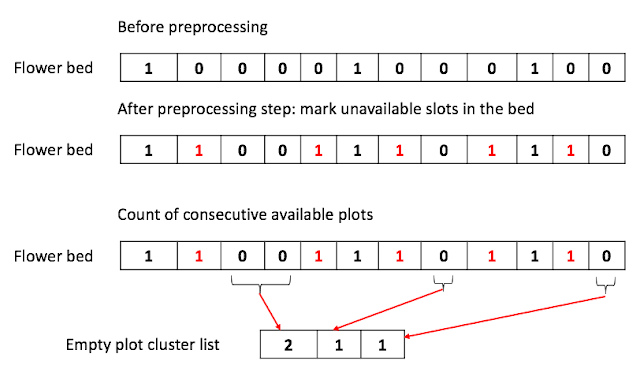Find the ways of climb up the stairs
Problem
A child is running up a staircase with n steps, and can hop either 1 step, 2 steps,
or 3 steps at a time. Implement a method to count how many possible ways the
a child can run up the stairs.
Answer
Recursion through Depth first search
The simplest way is to recursively perform the DFS with backtracking. Given 3 options to choose from, the running time is $$O(3^N)$$, where N is the number of stairs.
As I mentioned earlier, it is not an optimal algorithm.
Here is the complete code
More efficient algorithm with Dynamic programming
In the previous algorithm, there are many redundant combinations repeated through the DFS search. As seen in "Finding the number of ways to climb stairs", the ways to climb to Nth stairs can be expressed as below: $$C_n = C_{n-1} + C_{n-2} + C_{n-3}$$, where $C_n$ is the ways to run up to Nth stair. In writing, the ways to run up to Nth stair is the sum of the ways to run up to N-1th stairs, N-2 th stair, and N-3 stair.
Based on this optimal solution structure we can build the solution bottom up.
First, we need to set the base cases straight. For the first three stairs.
$$C_{0} = 1$$
$$C_{1} = C_{1-1} + C_{1-2} + C_{1-3} = C_{0} = 1$$
$$C_{2} = C_{2-1} + C_{2-2} + C_{2-3} = C_{1} + C_{0} = 2$$
$$C_{3} = C_{3-1} + C_{3-2} + C_{3-3} = C_{2} + C_{1} + C_{0} = 4$$
From these base cases, we can start building up the solutions from the 4th stairs following this equation.
$$C_n = C_{n-1} + C_{n-2} + C_{n-3}$$
Please, refer to "Finding the number of ways to climb stairs" for a more detailed explanation. The only difference with this question is that "Finding the number of ways to climb stairs" had only one or two stairs choices.
The running time of this algorithm is $O(N)$.
Here is the complete code in C++.
Practice statistics
10.58: to write up the inefficient solution
26:00: to write up the second solution
26:00: to write up the second solution
UPDATE(2022-06-14): Solve the problem again after refreshing my memory on the dynamic programming. Took 3 mins to write the code with the critical mistake of setting the wrong value for $C_{0}$, 0 instead of 1.

Comments
Post a Comment